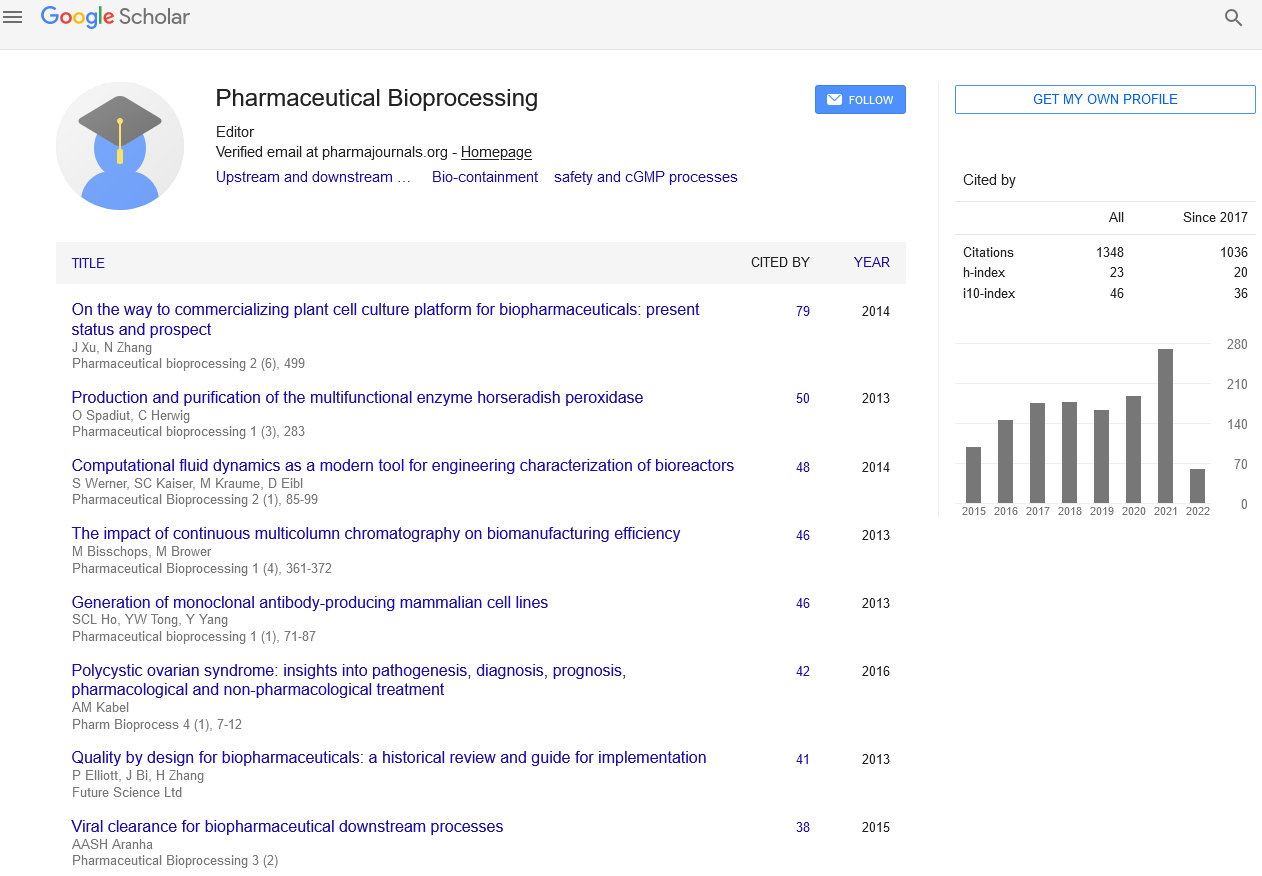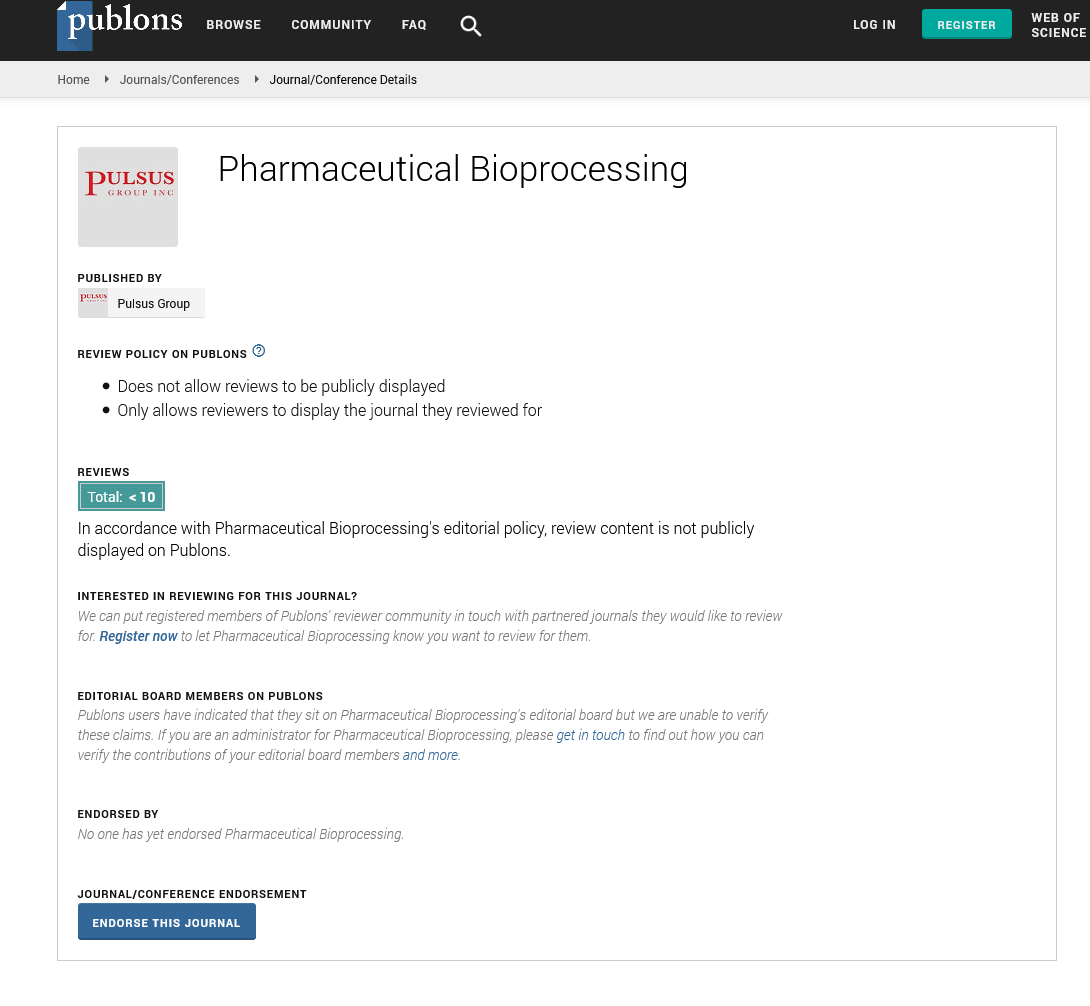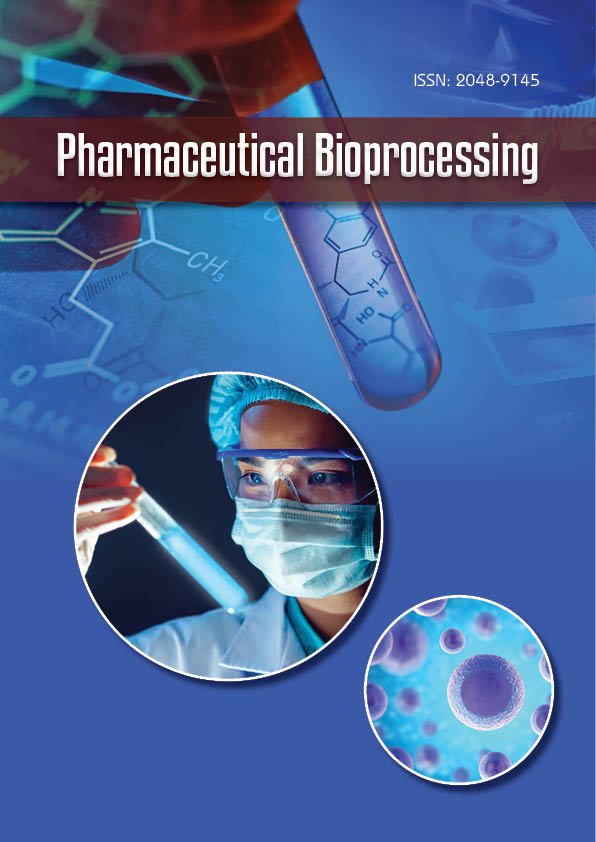Perspective - Pharmaceutical Bioprocessing (2025) Volume 13, Issue 1
Female Viewpoint on Hormonal Imbalance, Adult Acne Severity Pattern, and Outcome Dermatological Admissions
Rahul Hajar*
Department of Food Technology, Institute of Pharmaceutical Sciences, Punjab, India
- *Corresponding Author:
- Rahul Hajar
Department of Food Technology, Institute of Pharmaceutical Sciences, Punjab, India
E-mail: ranjithabce@gmail.com
Received: 02-Jan-2024, Manuscript No. FMPB-24-124231; Editor assigned: 04- Jan-2024, PreQC No. FMPB-24-124231 (PQ); Reviewed: 18-Jan-2024, QC No. FMPB-24-124231; Revised: 20- Mar-2025, Manuscript No. FMPB-24-124231 (R); Published: 27- Mar-2025, DOI: 10.37532/2048-9145.2025.13(1).256-257
Abstract
People can get acne into their 40’s and beyond. This commentary meticulously evaluates the interplay between hormonal imbalance and the severity of adult acne. Examining recent research advancements, it navigates the nuanced dynamics of this dermatological phenomenon. Through a comprehensive review of contemporary literature, the commentary endeavors to clarify the important relationship between hormonal fluctuations and the manifestation of adult acne.
Keywords
Hormonal imbalance • Adult acne • Meta-analysis • Dermatology • Therapeutic implications
Introduction
The investigation of hormonal imbalance and adult acne severity propels us into a thorough investigation of the detailed mechanisms steering the development of adult acne. Long overshadowed by its adolescent counterpart, adult acne has become a focal point in contemporary dermatological research. This commentary endeavors to demystify the molecular workings that define the connection between hormonal imbalances and the severity of adult acne, elucidating the scientific intricacies governing this skin condition. Adult acne, often considered an extension of the hormonal upheaval in adolescence, poses unique challenges [1-3]. The title signifies a pivotal aspect of our inquiry, signaling a shift towards understanding how hormonal imbalances orchestrate the severity of acne lesions in adults. Mechanism-based exploration seeks to decode the molecular events within the skin influenced by hormonal fluctuations. At its core, this mechanistic unraveling begins with the acknowledgment of androgens, estrogens, and other hormonal fluctuations as key players in the dermatological narrative of adult acne [4,5]. These hormones regulate the sebaceous glands, impacting sebum production and composition [6].
Description
Androgens, specifically, stimulate sebum production, altering the skin’s lipid environment and creating conditions favorable for the development of acne. Grasping these hormonal influences at a molecular level is crucial for comprehending the nuanced interplay leading to acne severity [7,8]. Moreover, hormones also play a role in follicular hyperkeratinization a process where excess keratinocytes block hair follicles, contributing to the formation of comedones [9], a hallmark of acne lesions [10,11]. Hormonally induced changes in keratinocyte proliferation and differentiation affect the integrity of hair follicles, setting the stage for the inflammatory cascade characteristic of acne lesions [12,13]. Inflammation is central to acne severity, and hormonal imbalances influence over this aspect as well. Androgens stimulate the release of pro-inflammatory mediators, contributing to the inflammatory environment within the pilosebaceous unit [14]. This inflammatory response, coupled with changes in sebum composition, creates an environment conducive to the proliferation of propionibacterium acnes, a bacterium closely linked to acne pathogenesis [14,15]. As we navigate, the gaps and controversies in research emerge, challenging the comprehensive understanding of the mechanisms through which hormonal imbalances worsen acne severity. The precise signaling pathways and molecular cascades linking hormonal fluctuations to specific acne lesions remain active areas of investigation. Future research is pivotal for developing targeted therapeutic strategies. Our comprehension of the mechanisms underlying hormonal influences on adult acne severity advances, significant clinical implications. Dermatologists are progressively customizing interventions to target hormonal factors, encompassing a spectrum from conventional treatments to innovative modalities like hormonal therapies [16]. This not only enhances our understanding of adult acne but also ushers in an era of precision medicine in dermatology. This transformative shift paves the way for personalized therapeutic approaches, tailored to the unique hormonal environment of each individual.
Conclusion
In conclusion, the persistence of acne into one’s 40’s and beyond underscores the complexity of this condition, particularly its connection to hormonal imbalances. This commentary highlights that adult acne is not merely a remnant of adolescence but a multifaceted dermatological issue influenced by fluctuating hormones throughout adulthood. Recent research advancements reveal that hormonal changes, whether due to natural life stages or external factors, play a significant role in the severity and presentation of acne in adults. By synthesizing contemporary literature, we gain a clearer understanding of how these hormonal dynamics interact with skin health, emphasizing the need for tailored approaches to treatment. As the discourse around adult acne evolves, it becomes increasingly important for both individuals and healthcare providers to recognize the implications of hormonal fluctuations, facilitating more effective management strategies. Ultimately, addressing adult acne requires a holistic perspective that considers the intricate relationship between hormones and skin health, ensuring that those affected receive the support and care they need as they navigate this challenging aspect of dermatological health.
References
- Dreno B, Thiboutot D, Layton AM, et al. Largeâscale international study enhances understanding of an emerging acne population: Adult females. Eur J Dermatol. 29, 1096-106 (2015).
[Crossref] [Google Scholar] [PubMed]
- Dreno B. Treatment of adult female acne: A new challenge. J Eur Acad Dermatol Venereol. 29, 14-19 (2015).
[Crossref] [Google Scholar] [PubMed]
- Goulden V, Clark SM, Cunliffe WJ. Postâadolescent acne: A review of clinical features. Br J Dermatol. 136, 66-70 (1997).
[Crossref] [Google Scholar] [PubMed]
- Tanghetti EA, Kawata AK, Daniels SR, et al. Understanding the burden of adult female acne. J Clin Aesthet Dermatol. 7, 22 (2014).
[Google Scholar] [PubMed]
- Cunliffe WJ, Gould DJ. Prevalence of facial acne vulgaris in late adolescence and in adults. Br Med J. 1, 1109-1110 (1979).
[Crossref] [Google Scholar] [PubMed]
- Schmitt JV, Masuda PY, Miot HA. Acne in women: Clinical patterns in different age-groups. An Bras Dermatol. 84, 349-354 (2009).
[Google Scholar] [PubMed]
- Dreno B, Layton A, Zouboulis CC, et al. Adult female acne: A new paradigm. J Eur Acad Dermatol Venereol. 27, 1063-1070 (2013).
[Crossref] [Google Scholar] [PubMed]
- Preneau S, Dreno B. Female acne–a different subtype of teenager acne. J Eur Acad Dermatol Venereol. 26, 277-282 (2012).
[Crossref] [Google Scholar] [PubMed]
- Zeichner JA, Baldwin HE, Cook-Bolden FE, et al. Emerging issues in adult female acne. J Clin Aesthet Dermatol. 10(1): 37 (2017).
[Google Scholar] [PubMed]
- Silpa-Archa N, Kohli I, Chaowattanapanit S, et al. Postinflammatory hyperpigmentation: A comprehensive overview: Epidemiology, pathogenesis, clinical presentation, and noninvasive assessment technique. J Eur Acad Dermatol Venereol. 77, 591-605 (2017).
[Crossref] [Google Scholar] [PubMed]
- Addor FA, Schalka S. Acne in adult women: Epidemiological, diagnostic and therapeutic aspects. An Bras Dermatol. 85, 789-795 (2010).
[Crossref] [Google Scholar] [PubMed]
- Auffret N, Claudel JP, Leccia MT, et al. AFAST–Adult Female Acne Scoring Tool: An easy to use tool for scoring acne in adult females. J Eur Acad Dermatol Venereol. 30, 824-828 (2016).
[Crossref] [Google Scholar] [PubMed]
- Dreno B, Poli F, Pawin H, et al. Development and evaluation of a Global Acne Severity scale (GEA scale) suitable for France and Europe. J Eur Acad Dermatol Venereol. 25, 43-48 (2011).
[Crossref] [Google Scholar] [PubMed]
- Bhat YJ, Latief I, Hassan I. Update on etiopathogenesis and treatment of acne. Indian J Dermatol Venereol Leprol. 83, 298 (2017).
[Crossref] [Google Scholar] [PubMed]
- Antiga E, Verdelli A, Bonciani D, et al. Acne: A new model of immune-mediated chronic inflammatory skin disease. G Ital Dermatol Venereol. 150, 247-254 (2015).
- Alexandre Rocha M, Sousa Costa C, et al. Acne vulgaris: An inflammatory disease even before the onset of clinical lesions. Inflamm Allergy Drug Targets. 13, 162-167 (2014).
[Crossref] [Google Scholar] [PubMed]


